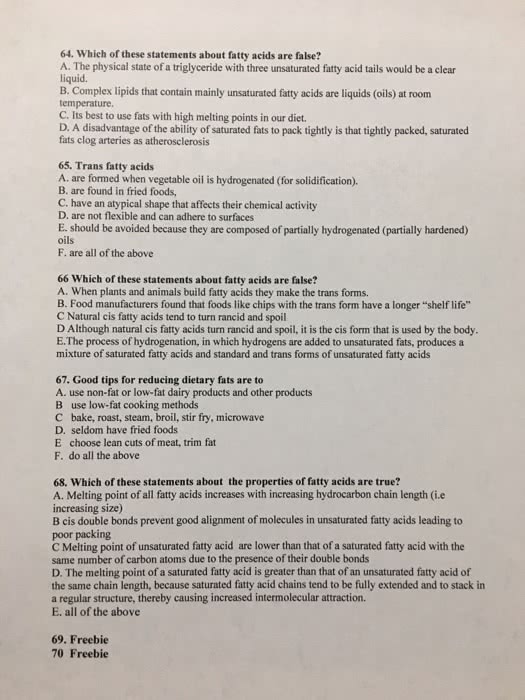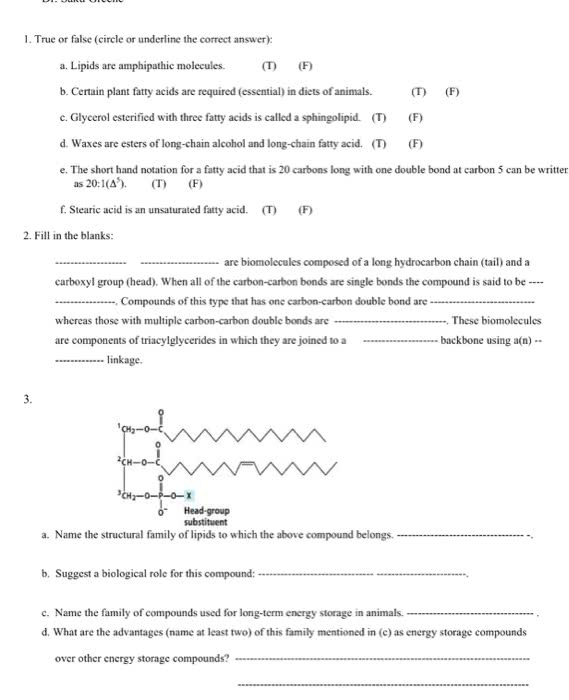FNN 111 Chapter Notes - Chapter 5: Very Low-Density Lipoprotein, Adipocyte, Peanut Oil
Document Summary
Fats and oils are two different kinds of lipids. Three common types of fats: triglycerides, phospholipids, and sterols. 95% of fats we consume come from triglycerides. Glycerol: alcohol composed of three carbon atoms; this is the backbone of a triglyceride. Length determines how fats are digested and absorbed. Saturated fatty acids (sfa): no double bonds on the carbon chain as each carbon is saturated by hydrogen. Saturated acids are easier to digest as they only contain single bonds; additionally saturated fats are solid at room temperature: lard, coconut oil, butter, palm kernel oil. Sfa are solid are room temperature because single bonds can pack tightly together in comparison to double bonds which take up more space because of their kinks. 18:0 is the ratio used to describe the number of double bonds in sfa. Monounsaturated fatty acids (mufas): two carbons linked through a double bond. Monounsaturated bonds are liquid at room temperature: olive oil, canola oil.




